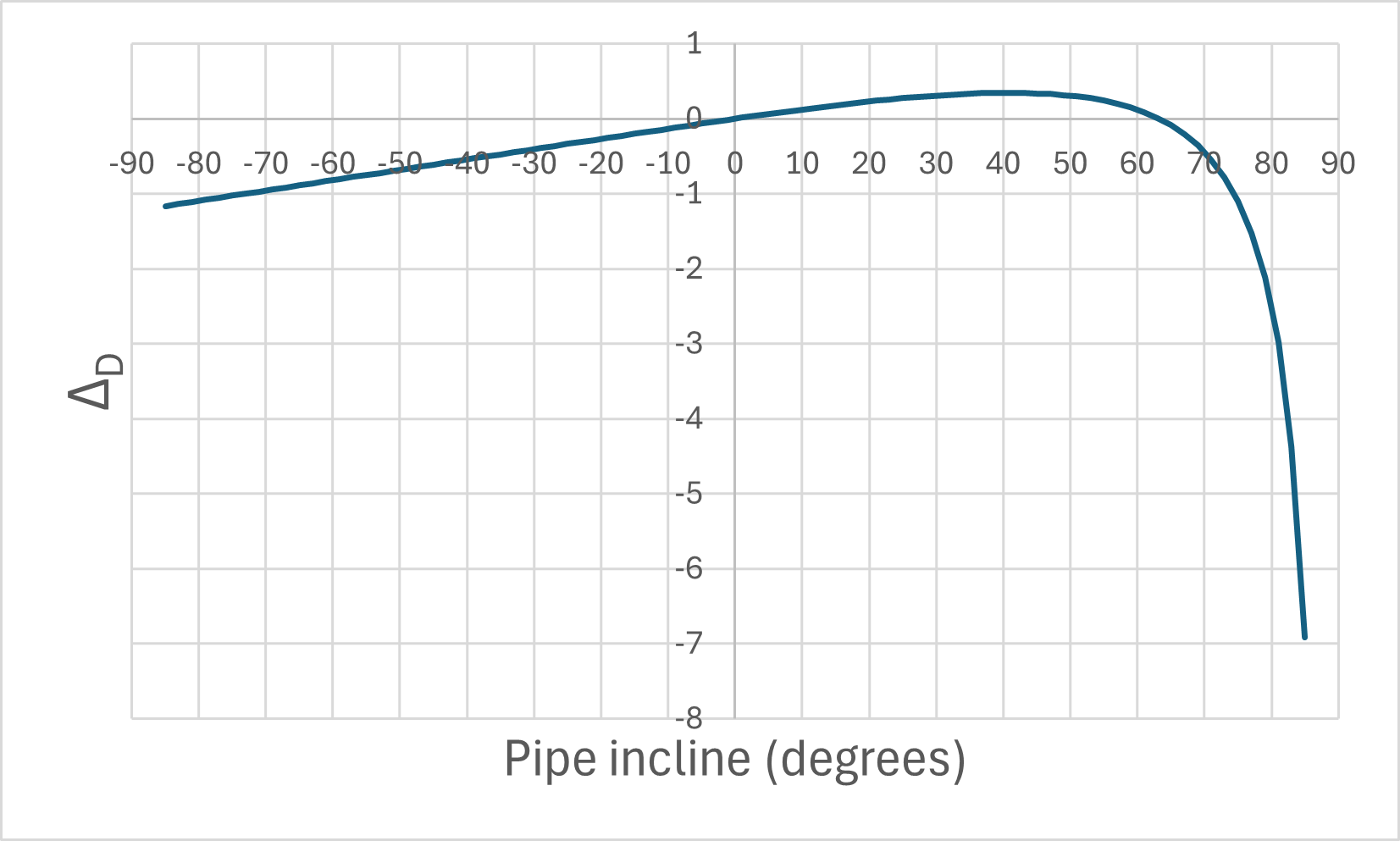Sloped Pipe Theory For Slurries
Wilson, Addie, Clift Settling Slurry
Sloped pipe calculations are a combination of horizontal head loss and a vertical component. A widely used formula is given in Wilson, et al, 2006Wilson, K.C., G.R. Addie, A. Sellgren and R. Clift, Slurry Transport Using Centrifugal Pumps, 3rd Ed., published by Springer, 2006., on page 183. This is used for all Wilson, Addie, Clift slurry models.
|
|
(1) |
Where Δi(θ) is simply the excess pressure gradient (im – iw) for a pipe at an angle θ.
The term Δi(θ) is the solids effect for a horizontal pipe and is calculated using the equations described in that section above. It is modified by cos(θ) to reflect the pipe inclination from horizontal.
The Deposition Velocity, Vsm, is also modified based on pipe angle. The following is added to the value calculated for horizontal pipes.
|
|
(2) |
Where ΔD is determined from the graph in Wilson, et al, 2006, on page 181.
The sloped pipe corrections used for the 4-Component Slurry Model developed by GIW Industries IncVisintainer, Robert. “GIW 4-Component Model Summary 2022-09-03.” GIW Industries Inc., 2022. [Online]. Available: https://www.ksb.com/en-us/services/service-for-slurry-pumps/hydraulic-lab are similar to the Wilson, Addie, Clift approaches shown above, but have been adapted for use with multiple components and the graphical method for ΔDhas been replaced with an analytical expression. Settling velocity corrections are shown in Equations 3 and 4.
|
|
(3) |
|
|
(4) |
Where D is the pipe diameter in meters, θ is the pipe angle in radians, Ss is the solid specific gravity and Sf is the specific gravity of the carrier portion of the fluid which is affected by particles smaller than 40 microns. A plot of ΔD is shown in Figure 1.

Figure 1: A plot of the analytical form of delta D used for 4-Component slope corrections
The corrected pressure gradient is shown in Equation 5. Note that the solutions to the heterogeneous gradient component Δih and the stratified gradient component Δis are affected by the change in deposition velocity, and therefore differ from their horizontal values.
|
|
(5) |
Wasp-Durand Heterogeneous Model
The Wasp-Durand Heterogeneous Slurry Model does not account for inclined pipes or vertical conveying effects. For this reason, a caution message will be displayed for pipes with an angle greater than 8 degrees, and a warning message will be shown for pipes angled beyond 18 degrees.



